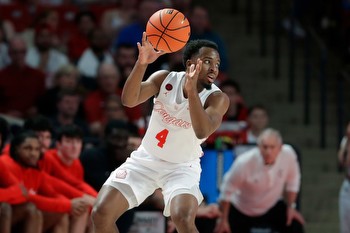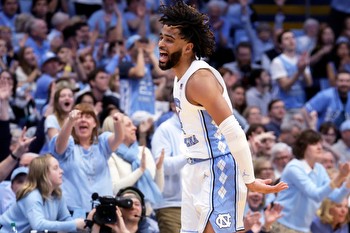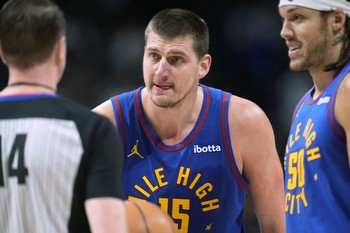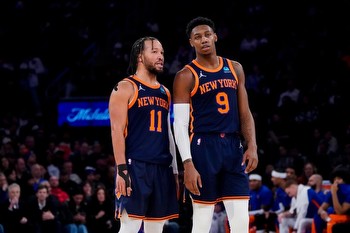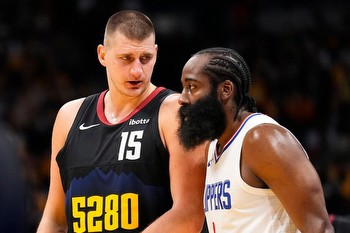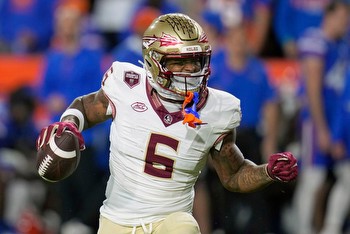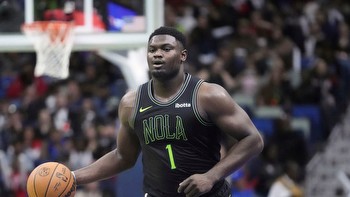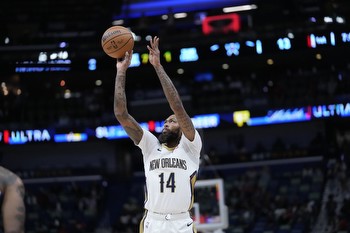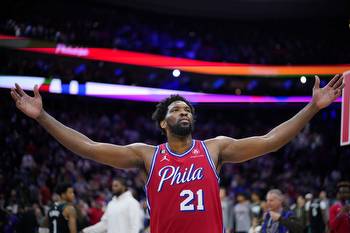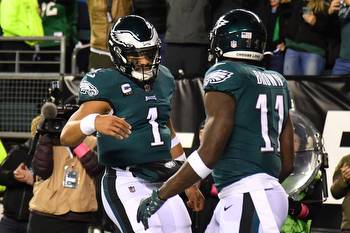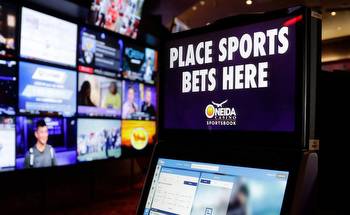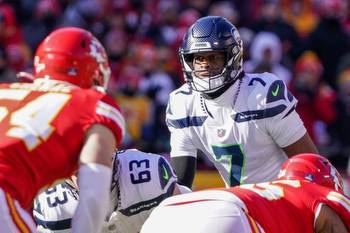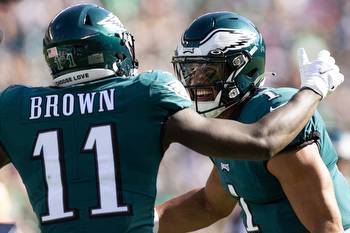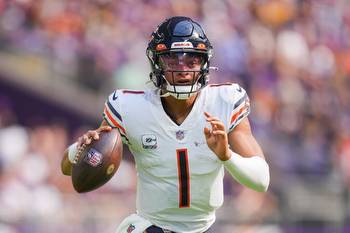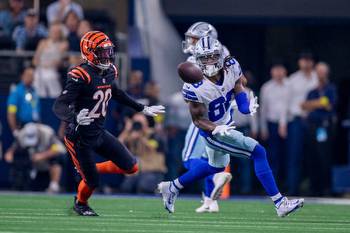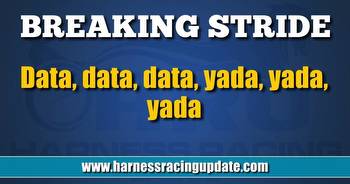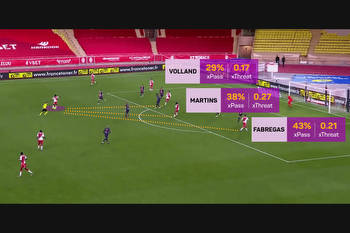Top 7 Sports Betting Strategies: Tips From a Betting Expert
Betting advice is like scrambled eggs. A seven-year-old can make them. Doesn’t mean they’re any good.
For several decades, I’ve developed and honed a range of betting strategies that can be employed across sports and contest types. Here are my top seven strategies, which I incorporate into nearly every Pro Football Network article.
Top Sports Betting Strategies to Follow
While there are no “perfect” or even near-perfect approaches, some are verifiably better than others, as they fairly consistently yield returns on investments. With that in mind, here are my top approaches — the ones I use when crafting DFS slates, prop recommendations, against-the-spread predictions, and so on.
1. Maintain Rigid Objectivity
Betting is a solitary activity in a communal atmosphere. It’s not like fantasy sports. There’s no direct cause-and-effect when another person makes a move.
That said, the market as a whole makes decisions that might impact your decision-making. If a home team is favored by five points on Tuesday, and then by eight points a few days later, it suggests the market is (relatively) more bullish about the home team. Perhaps an injury to the road team’s starting running back is more serious than first reported.
Or maybe there’s no definable reason for the shift. We’re all human. We might be persuaded by something we read — for example, a widely publicized news story hyping the home team’s improving offense.
Some people bet on teams they love because they want to avoid rooting against them. The same goes for players.
Our job as bettors is to shut out market noise. That doesn’t mean ignoring actionable intelligence. Instead, it means distinguishing the subjective from the objective. Opinions from truth. Hope from reality.
We must maintain rigid objectivity, which gives us a competitive advantage over a market that sometimes allows feelings to influence decisions. We, on the other hand, must be unfeeling. That might sound overly blunt, but it’s the most direct path to actionable clarity.
2. Map Out the Likeliest Game Scripts
In 2022, I recommended to PFN readers a DFS lineup for the Pro Bowl. Like other DFS lineups, prop bets, against-the-spread predictions, and moneyline recommendations, my proposed lineup was the culmination of dozens of game-script simulations.
For example, the most likely game scripts for the Pro Bowl featured a heavy dose of WRs and TEs, minimal RB usage, and hit-or-miss QB production. This lineup ended up dominating because the actual game closely mirrored the likeliest pre-game scripts.
Like almost anything, mapping scripts takes time and practice. And there are different degrees of complexity. To be a successful bettor, you don’t need to hit these perfectly every time, or even a large majority of the time.
The primary key is to avoid high-risk decisions. For example, recommending an RB in the Pro Bowl slate would have been high-risk based on how those games generally flow.
Here’s another example, applying extremes for simplicity’s sake: Suppose a 14-1 team is playing at home versus a 2-13 team. The 14-1 team is favored to win by 17.5 points. Your game-script simulations suggest a very high probability that the favorite will win in a blowout.
Applying this information, we might deduce that the starting RB on the 2-13 team has a low probability of thriving, as the likeliest game scripts might force his team to throw more in catch-up mode. If, instead, you anticipate that the RB will be leaned on heavily throughout the game, great. Roll with it. But if such a scenario seems farfetched based on your simulations, then fade that player with relative confidence.
3. Bet Independently of the Lines
Have you ever stopped outside a bakery, looked in the window, and suddenly had a dessert craving?
It’s human nature to be impacted by external stimuli. If we read horrible news online, we might think the world is a worse place than it was the day before. If we read about heroism, we might think that humanity is more courageous than it was the day before.
In the insular world of sports betting, the same laws of nature apply. Our challenge is to formulate opinions before others formulate them for us.
So before reviewing point spreads, player props, or even DFS pricing, follow steps No. 1 and 2 above. If the Dallas Cowboys are playing the Miami Dolphins, what are the most likely game scripts based on each team’s relative health, offensive and defensive prowess, etc.? Which players have the highest realistic floors and ceilings? Which ones have the lowest? Are there any dart throws poised to break out based on favorable conditions?
Once you formulate projections for each player and team, check the lines for each, and wager based on what you’ve established rather than solely on what the market has presented. For example, Pikkit has a bet-tracking app that helps bettors track every line on one screen for easy viewing.
4. Generate Your Own Intel
“Generating intel” goes several steps beyond game scripting. If you want to become an expert, it’s essential to develop your own data sets and predictive analytics.
I’ve been doing this for years. Step one often entails proposing a theory. For example, over the past 10 years, to what extent have starting quarterbacks averaged more or fewer passing yards at home versus on the road?
Step two is time intensive: gather the data. I never use analyses made by others because we can never know how they arrive at this analysis nor whether they inadvertently omitted data, thus skewing the results. Instead, use a reputable website to pluck key data points and add them to a spreadsheet with an eye toward gathering than you think you need.
Step three: analyze the data. Remember the last sentence in the previous paragraph? If you have a wealth of data, then parse it by year, by QB age, by month of the season, etc.
Step four: if you’ve identified actionable intelligence, then double your research, going back further chronologically to determine if your findings hold up.
Step five: if the actionable intelligence holds, then you have the starting point for a statistically meaningful betting model to be built out over time to assess its continued usefulness.
I have many dozens of betting models focused on positional “old age,” volume-based regressions, positional blow-up potential, and so on. Each requires regular updates. All are currently actionable because they yield intelligence that increases the odds of betting success.
5. Remember That the Market Often Wins
Try this experiment: find a website that displays anytime-touchdown odds for each player in an upcoming game. Transcribe each player’s name and odds in a spreadsheet. After the game, note which players scored and which ones didn’t. Barring a historically unprecedented high-scoring game, most of the players won’t score.
While writing this article, I did this exercise for the most recently completed game: the Chiefs-Jaguars Divisional playoff contest on January 21, 2023. Going into this game, I jotted down the names and most favorable scoring odds I could find for all 31 players listed.
The Chiefs won 27-20, with both teams combining for five touchdowns. For this experiment, the final score could be viewed as “typical.” The Chiefs averaged 29.2 points during the regular season on 3.5 offensive TDs per game. Meanwhile, the Jags averaged 23.8 points during the regular season on 2.4 TDs.
So both teams fell a little short of their season average, combining for nearly one TD less than they normally secured. But still, this was close to a “normal” outcome for these teams.
Based on the anytime-touchdown betting lines, if we had bet $1 on each player to score, ranging from the best odds (Travis Kelce at -140) to the worst (Luke Farrell at +2200), we would have lost $18.82.
Let’s say we scrapped the long shots and bet only on players with +500 odds or better. Among those 19 bets, we would have lost $6.82.
Now let’s say we bet only on the favorites — they guys most likely to score. The amazing bell cows. The elite receivers. Essentially, anyone with negative odds. That would have left us with four players. Two of them scored. And we still would have lost money ($0.42).
Remember that when you bet, the lines and/or rules generally are designed to ensure profits for the operators. Just like in a casino, some games are riskier than others. Know what your risk tolerance is, and if you’re like me, focus on the contests where you can generate and sustain the biggest competitive advantage.
6. Hedging vs. Going All In
Some bettors like to hedge. Others like to go all in. You know what kind of bettor you are. If you don’t, figure it out fast.
I like each strategy, depending on the situation. Let’s take DFS on a platform like DraftKings or FanDuel as an example. In 50/50 and double-up contests (where 50% of competitors earn 80%-100% returns), I often hedge. Not always. It depends on my level of bullishness. But in general, I’m not going for the home run. Instead, I’m aiming for a massive floor to help catapult me into the top half — for example, two 12+ touch RBs on a run-heavy team that often runs it in near the goal line.
Overall, as shared throughout each week of the season on PFN’s website, this approach netted a 65% win rate in 2022. Statistically, that’s a profitable return.
But tournaments require something more. I’ve won two DFS tournaments over the years. It’s hard. Everything has to break right. In a week where five players score 30+ DFS points, if your lineup doesn’t have at least three of them, you probably won’t finish in the top 10.
In those contests, the biggest payoffs generally go to those who go all in: a high-priced RB with three-TD potential, a team’s No. 1 WR versus a bottom-tier secondary, a D/ST against a rookie QB missing two starting linemen, etc.
What happens on the field doesn’t always go as planned. Sometimes it’s better to hedge. Other times it’s better to go for the boom at the risk of a much lower floor. Know what works for you and when.
7. Player-Speak Matters More Than Coach-Speak
A head coach might say his No. 3 WR will “get more work soon.” Many attentive bettors might wager accordingly.
But not so fast. I’ve found that much of what coaches say publicly is bunk, at least as it relates to our betting interests. That No. 3 WR might see zero targets over the next two weeks. Or the backup RB that the coach is hyping might not, in fact, challenge the lead RB for the starting job.
When I want intel, I go to the source. How frustrated is the No. 1 WR after getting only five looks in each of the last two games — especially if both were losses? Because when a player shares something publicly (particularly frustration), he wants his quarterback and coaches to hear it.
Coaches are trying to manage their entire team. Each player is trying to manage merely himself. If we want intel on what a player — particularly a team leader — wants to see on the field, then we need only listen.
Of course, that doesn’t mean circumstances will change. But I’ve found repeatedly that influential players are more reliable communicators of game plans than their more guarded coaches.

